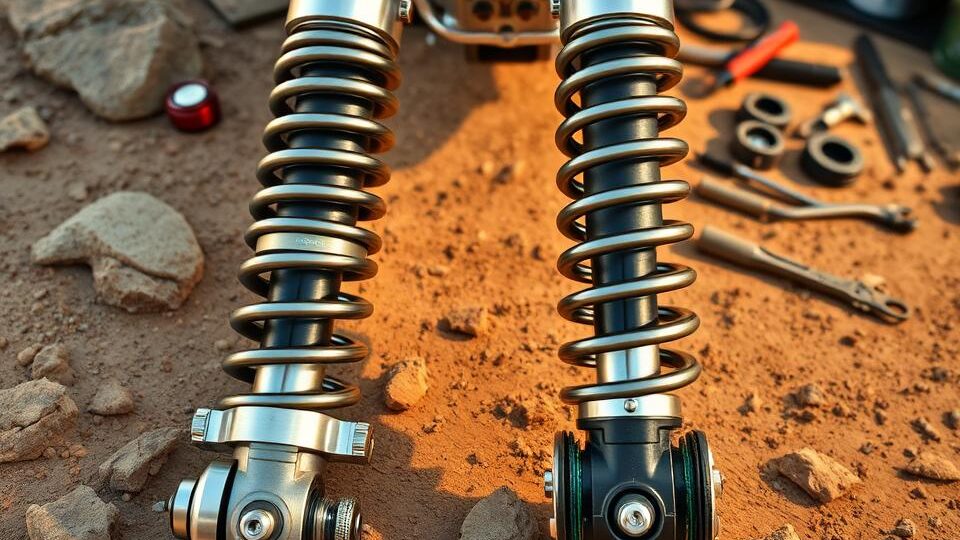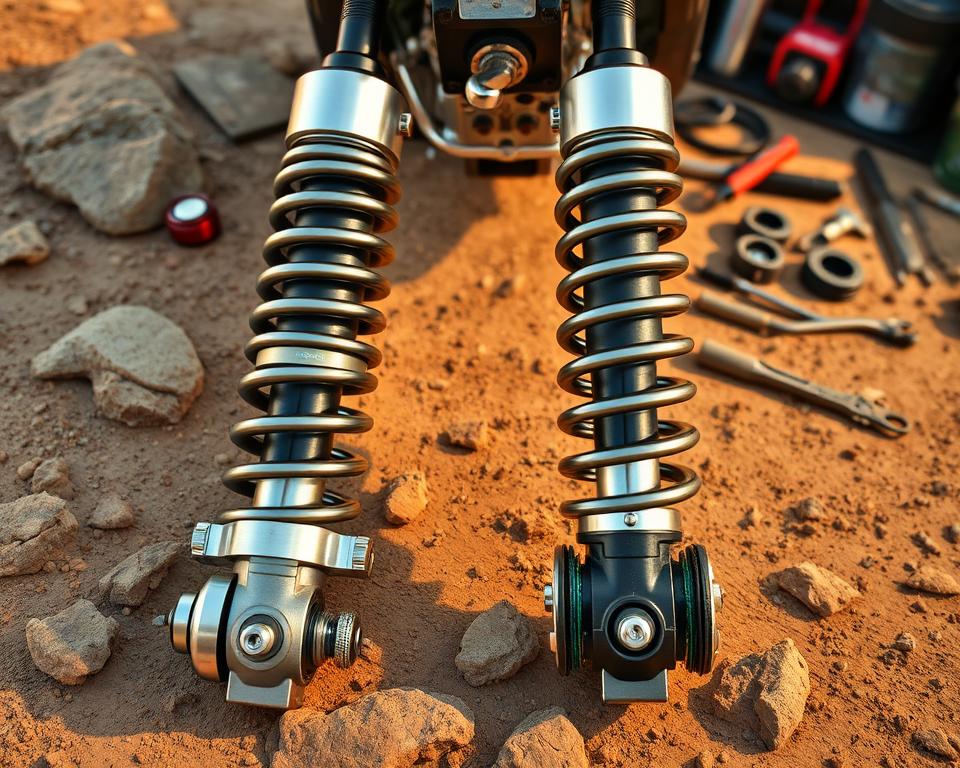
Rapid-Install Can Am X3 Roof Speaker Box for Weekend Warriors
Steering Clear of ATV/UTV Gearing Errors for Novices
Surprisingly that nearly 25% of new ATV and UTV owners face gear selection issues within their first year? Such data emphasizes how critical gear ratios are for novice riders. Beyond performance, proper gearing is a key safety factor. We’ll explore common mistakes, maintenance practices, and expert Can Am x3 sound roof advice to improve your off-road adventures.
Critical Findings

- Understanding gear ratios is vital for optimal ATV/UTV performance.
- Common gearing oversights can lead to safety risks on the trails.
- Regular maintenance is key to preventing UTV transmission issues.
- Proper gear selection greatly enhances off-road riding experiences.
- Applying service recommendations increases longevity.
Understanding ATV and UTV Gear Ratios
Gear ratios are vital for the performance of ATVs and UTVs. They govern both top speed and hauling capacity. This controls how quickly you get up to speed and tow trailers. By picking specific ratios, you tailor your ride for drag, trail, or work.
Selecting proper gears unlocks engine potential. Excessively low gearing reduces hill-climbing pull. Overgearing sacrifices quickness for top-end speed.
Many enthusiasts use gear reduction to enhance handling and adaptability across different terrains. Ratio mods shape how your rig behaves off-road. This ensures the machine operates efficiently, whether prioritizing speed or torque. Finding the sweet spot in gearing enhances ride quality and fuel economy.
Common Gearing Oversights for New ATV/UTV Owners
Proper gear choice underpins both power and protection. Many new owners overlook critical aspects of gear selection. Grasping misgear consequences and correct choices elevates your performance. Plus, it prevents mechanical setbacks.
Impact of Incorrect Gear Selection
Misgearing risks crashes and costly damage. The wrong gear can slow down acceleration, affect braking, and cause excessive wear. These mishaps compromise safety for all on and off board. Following key ATV maintenance tips can help avoid these issues.
Choosing the Right Gear for Terrain
Different terrains need different gearing for efficient performance. Climbing requires low-end grunt from smaller ratios. To cover ground quickly, shift to higher ratios. In muddy or sandy conditions, choosing the right gear is essential for traction and stability. Recognizing terrain traits delivers safer, smoother rides.
The Importance of Proper ATV Maintenance
Scheduled service avoids surprises on the trail. Adhering to care guides prevents sudden failures and enhances safety. A well-planned maintenance schedule focuses on the gear system’s health.
Regular Inspection and Maintenance
A detailed inspection checklist is essential for spotting issues early. It’s important to check gears, brakes, tires, and belts regularly. By making this checklist a part of your routine, you can greatly enhance your vehicle’s performance. Here are some critical inspection points to remember:
- Check gear mesh and teeth condition.
- Check for loose bolts or connections.
- Check master cylinder and calipers for leaks.
- Measure wheel pressure and wear.
- Review electrical systems for corrosion.
Fluid Changes and Gear Health
Fresh oils ensure the gearbox stays healthy. Frequent changes clear out contaminants. Clean fluids ensure smoother operation and reduce friction, extending the life of vital parts. Adopting this routine preserves drivetrain health and trail readiness.
| Fluid Type | Recommended Change Interval | Benefits of Regular Change |
|---|---|---|
| Motor Oil | Every 50-100 hours | Cuts friction and boosts power |
| Differential Oil | 100–200 operating hours | Smooths shifts and prevents pitting |
| Antifreeze | Annually | Prevents overheating, maintains optimal temperature |
By following these guidelines, enthusiasts can enjoy their rides without worrying about mechanical failures. This makes every journey more enjoyable.
Common ATV Gear Shifting Problems
Many beginners wrestle with the gearbox. Mastering smooth shifting techniques can greatly improve the riding experience. You avoid jerky starts and stops. Synchronizing engine speed and clutch engagement stops misshifts.
Learning to Shift Smoothly
Honing silky shift skills takes deliberate training. Start by getting to know your ATV engine’s rhythm. Careful engagement protects internals and stops wear. Blending throttle with clutch release ensures seamless shifts.
Drill shifts in an open space to build skill. Focus on gentle throttle application during each gear change.
Recognizing Signs of Gear Issues
Early detection of gear issues is essential. Listen for unusual sounds like grinding or popping, which may mean gears aren’t engaging right. Stuck gears or false neutrals are warning signs. Fixing problems fast keeps you safer on the trail. Addressing ATV gear shifting problems properly maintains vehicle performance and boosts your confidence while riding.
Understanding UTV Transmission Issues
UTV gearbox troubles challenge many owners, so familiarity helps diagnose. Typical troubles involve gears that slip and grinding sounds. Here we examine usual faults and outline a step-by-step fix plan. Leveraging user-friendly diagnostic procedures.
Diagnosing Common Problems
Identifying symptoms early prevents bigger issues. Common issues include:
- Gears that pop out under load, risking accidents.
- Unusual sounds, such as grinding or whining, indicating mechanical damage.
- Drips or puddles under the UTV may foretell failures.
Scheduled inspections catch problems fast. You can then address issues swiftly. Missing early clues damages your ride and wallet.
Solutions for Troubleshooting UTV Transmissions
Fixing UTV transmission issues requires a systematic approach. Follow these steps for effective troubleshooting:
- Check fluid levels and top up if necessary.
- Inspect pan and seals for drips.
- Open housing to check bearings and gears.
- Test drive the UTV at various speeds to monitor gear engagement and responsiveness.
- Check OEM guides for model-specific repair advice.
Leveraging a proven guide speeds up repairs. Knowing how transmissions work benefits every rider. It greatly enhances your vehicle’s longevity and efficiency.
ATV Clutch Adjustments and Their Benefits
Accurate clutch tuning unlocks seamless shifts. Incorrect adjustments can make shifting gears tough, frustrating for beginners. Frequent tuning enhances clutch grip and shift precision.
Fine-tuning clutch engagement matters. Correctly calibrated clutches enable flawless transitions. This enhances the ATV’s power delivery, making rides more enjoyable on different terrains.
Ignoring clutch adjustments can harm performance and wear out parts. Consistent adjustments sustain peak clutch function. It’s critical for both new and seasoned riders to ensure their ATV performs at its best.
Mastering the Art of Gear Shifting
Mastering gear shifting techniques greatly enhances your riding experience. You need mechanical insight and precise timing to nail each shift. Beginners should focus on the rhythm of shifting gears. A steady shift rhythm yields cleaner transitions and more power.
Skillful shifting comes from drilling in diverse environments. Understanding when to shift gears based on terrain type enhances control and safety. Downshifting into grades safeguards momentum and balance.
- Practice shifting at low speeds to build confidence.
- Listen and feel each gear engagement.
- Step up to steeper, rougher trails as you improve.
Getting in sync with your ride ensures perfect shifts. Pay attention to engine sounds and vibrations. Such feedback tells you when to execute transitions. That instinctive skill yields seamless shifts and more fun.
Best Practices for UTV Gear Selector Problems
Resolving gear lever faults requires regular inspection and testing. Regular inspections are key to spotting issues early. Learning proper lever use minimizes failures. Check shifter arms and oil levels with each maintenance session.
At the first sign of trouble, clear debris from the shifter. Squeaks might indicate misalignment. Minor tweaks typically fix selector snags. Scheduled servicing prevents selector degradation.
Tracking shift quality across terrains isolates faults. These best practices not only extend the gear selector’s life but also make riding safer and more enjoyable.
Tips for Enhancing Gear Performance
Achieving top drivetrain function demands regular attention. Scheduled upkeep enhances ATV efficiency. It’s important to check fluid levels, inspect for wear, and adjust settings as needed. A simple inspection can prevent extensive damage and costly repairs.
Selecting proper reductions yields prompt acceleration and fluid movement. Knowing trail types steers your ratio choices. It influences your launch and maximum velocity. Partnering with trusted makers like American Off-Roads for UTV performance enhancements adds power and reliability.
Utilizing gear performance tips focused on tire selection, suspension adjustments, and weight distribution can further improve overall gear efficiency. Those mods lead to stable, confident rides across tough terrain. You’ll notice more thrill and less stress on every trip. By using these methods, you’ll tackle trails boldly and relish every moment.
As a Final Point
Mastering ATV/UTV gearing is essential for performance and safety. Matching gears to ground types transforms your adventure. By avoiding common mistakes and making smart choices, your off-road trips will be both fun and secure.
You can’t overemphasize regular service for power health. Scheduled maintenance and TLC save you from breakdowns and prolong service. Adequate maintenance enhances function and safeguards adventures across any terrain.
Combining correct gearing with scheduled service delivers peak satisfaction for riders. Following these guidelines paves the way for endless trail excitement.
Frequently Asked Questions
Standard gear ratios on off-road rigs?
Gear ratios span a broad spectrum across makes and models. Typical ratios lie within the 3-to-5 range. Low-end ratios yield higher pulling power. Taller ratios boost runway speed on level ground.
Signs of misgearing for different surfaces?
Using the wrong gear can lead to loss of control, excessive engine revving, or poor acceleration. Different grounds need dedicated ratios to maintain traction and speed.
How to know when your machine needs service?
Head off issues if shifts go crunchy, the box hums, oil drips, or power falls off. Regular checks of the gear system can prevent major issues.
When to swap your drivetrain oils?
Aim for a fluid swap between 1,500–2,500 miles or annually, whichever comes first. Pure oils maintain smooth shifts and protect internals over time.
Best practices for flawless shifts?
Master the throttle-clutch dance for silky shifts. Gradually release the clutch while pressing the throttle to match engine speed with wheel speed.
Steps to diagnose gearbox problems?
Start by checking for common problems like slipping gears or strange noises. Inspect the transmission fluid level and condition. Next, test-drive at varied speeds to see how it shifts.
Benefits of tuning your clutch?
Fine-tuned clutches deliver flawless shifts. Bad clutch alignment wears out parts prematurely and hinders shifts.
Adapt gearing for every surface?
Test multiple gearing options and look into quality mods by American Off-Roads. Regular maintenance, such as checking gear health and fluid levels, also enhances performance.
What should I do if my UTV gear selector is malfunctioning?
Scheduled upkeep resolves most shifter faults. If you encounter issues with a stuck selector or improper gear engagement, consult the troubleshooting guide in your owner’s manual for step-by-step diagnostics.
What common mistakes should new ATV/UTV owners avoid?
Rookies tend to ignore ratio basics, delay upkeep, or misgear for mud, rock, or hills. Such errors cause subpar power delivery and increased accident risk.